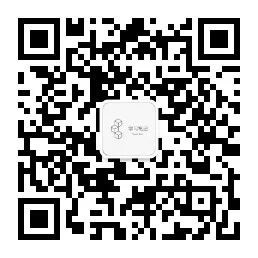「目录」
6.1 => Pandas的数据结构
6.2 => Pandas的基本功能
--------> reindex重新索引
--------> drop丢弃数据
--------> 索引和选取
6.3 => 数学和统计方法

在pandas中有多个方法可以索引,选取和组合数据,下面我们来看看吧!
索引
对于Series
Series索引的方式和Numpy数组的类似:
In [3]: obj = pd.Series(np.arange(4.), index = ['a', 'b', 'c', 'd'])
In [4]: obj
Out[4]:
a 0.0
b 1.0
c 2.0
d 3.0
dtype: float64
In [5]: obj[1]
Out[5]: 1.0
In [6]: obj[2:4]
Out[6]:
c 2.0
d 3.0
dtype: float64复制
只不过Series允许的索引值不只是整数:
In [7]: obj['a']
Out[7]: 0.0
In [8]: obj[['b', 'a', 'd']]
Out[8]:
b 1.0
a 0.0
d 3.0
dtype: float64
In [9]: obj[[1, 3]]
Out[9]:
b 1.0
d 3.0
dtype: float64
In [10]: obj[obj < 2]
Out[10]:
a 0.0
b 1.0
dtype: float64复制
还记得python的切片吗?pandas里的切片运算也与普通的python切片运算不同,python的切片不包含最后一个,而pandas是包含的。
In [11]: obj['b':'c']
Out[11]:
b 1.0
c 2.0
dtype: float64复制
通过索引和切片可以设置Series的相应部分:
In [12]: obj['a'] = 5
In [13]: obj['b':'c'] = 6
In [14]: obj
Out[14]:
a 5.0
b 6.0
c 6.0
d 3.0
dtype: float64复制
对于DataFrame
我们再来看对DataFrame的索引,先创建一个DataFrame:
In [15]: data = pd.DataFrame(np.arange(16).reshape((4, 4)), index=['Beijing', 'Shanghai', 'Tokyo', 'New York'], columns=['one', 'two', 'three', 'four'])
In [16]: data
Out[16]:
one two three four
Beijing 0 1 2 3
Shanghai 4 5 6 7
Tokyo 8 9 10 11
New York 12 13 14 15复制
用一个值或序列对DataFrame进行索引会获取一个或多个列:
In [17]: data['two']
Out[17]:
Beijing 1
Shanghai 5
Tokyo 9
New York 13
Name: two, dtype: int32
In [18]: data[['three', 'one']]
Out[18]:
three one
Beijing 2 0
Shanghai 6 4
Tokyo 10 8
New York 14 12复制
通过切片可以选取DataFrame的行:
In [19]: data[:2]
Out[19]:
one two three four
Beijing 0 1 2 3
Shanghai 4 5 6 7复制
我们还可以通过布尔型DataFrame设置条件来选取,比如我们要找所有小于5的元素:
In [20]: data < 5
Out[20]:
one two three four
Beijing True True True True
Shanghai True False False False
Tokyo False False False False
New York False False False False复制
我们可以看到所有满足条件的元素都是True,不满足的则是False。
现在将这个布尔型DataFrame当作索引传入,将所有对应为True的位置的元素改为0:
In [21]: data[data < 5] = 0
In [22]: data
Out[22]:
one two three four
Beijing 0 0 0 0
Shanghai 0 5 6 7
Tokyo 8 9 10 11
New York 12 13 14 15复制
用loc和iloc进行选取
对于DataFrame,pandas的作者引入了特殊的标签运算符loc和iloc,可以让我们用类似Numpy的方式从DataFrame选择行和列的子集。
loc和iloc的不同在于iloc是整数索引,而loc是轴标签索引。
通过loc使用标签来选取一行和多列:
In [23]: data.loc['Shanghai', ['two', 'three']]
Out[23]:
two 5
three 6
Name: Shanghai, dtype: int32复制
loc函数可以传入一个标签或多个标签的切片:
In [27]: data.loc[:'Beijing', 'two']
Out[27]:
Beijing 0
Name: two, dtype: int32复制
通过iloc使用整数进行选取:
In [24]: data.iloc[2, [3, 0, 1]]
Out[24]:
four 11
one 8
two 9
Name: Tokyo, dtype: int32
In [25]: data.iloc[2]
Out[25]:
one 8
two 9
three 10
four 11
Name: Tokyo, dtype: int32
In [26]: data.iloc[[1, 2], [3, 0, 1]]
Out[26]:
four one two
Shanghai 7 0 5
Tokyo 11 8 9复制
iloc函数也可以传入整数的切片:
In [28]: data.iloc[:, :3]
Out[28]:
one two three
Beijing 0 0 0
Shanghai 0 5 6
Tokyo 8 9 10
New York 12 13 14复制
at和iat
df.at,df.iat和loc,iloc相似,只不过df.at和df.iat通过行和列的标签(整数)选取单一的值:
In [29]: data.at['New York', 'three']
Out[29]: 14
In [30]: data.iat[3, 2]
Out[30]: 14复制
但同样的事loc和iloc也能做啊,所以这俩不常用吧。

往期回顾



stay hungry, stay foolish.
记得点在看啦







